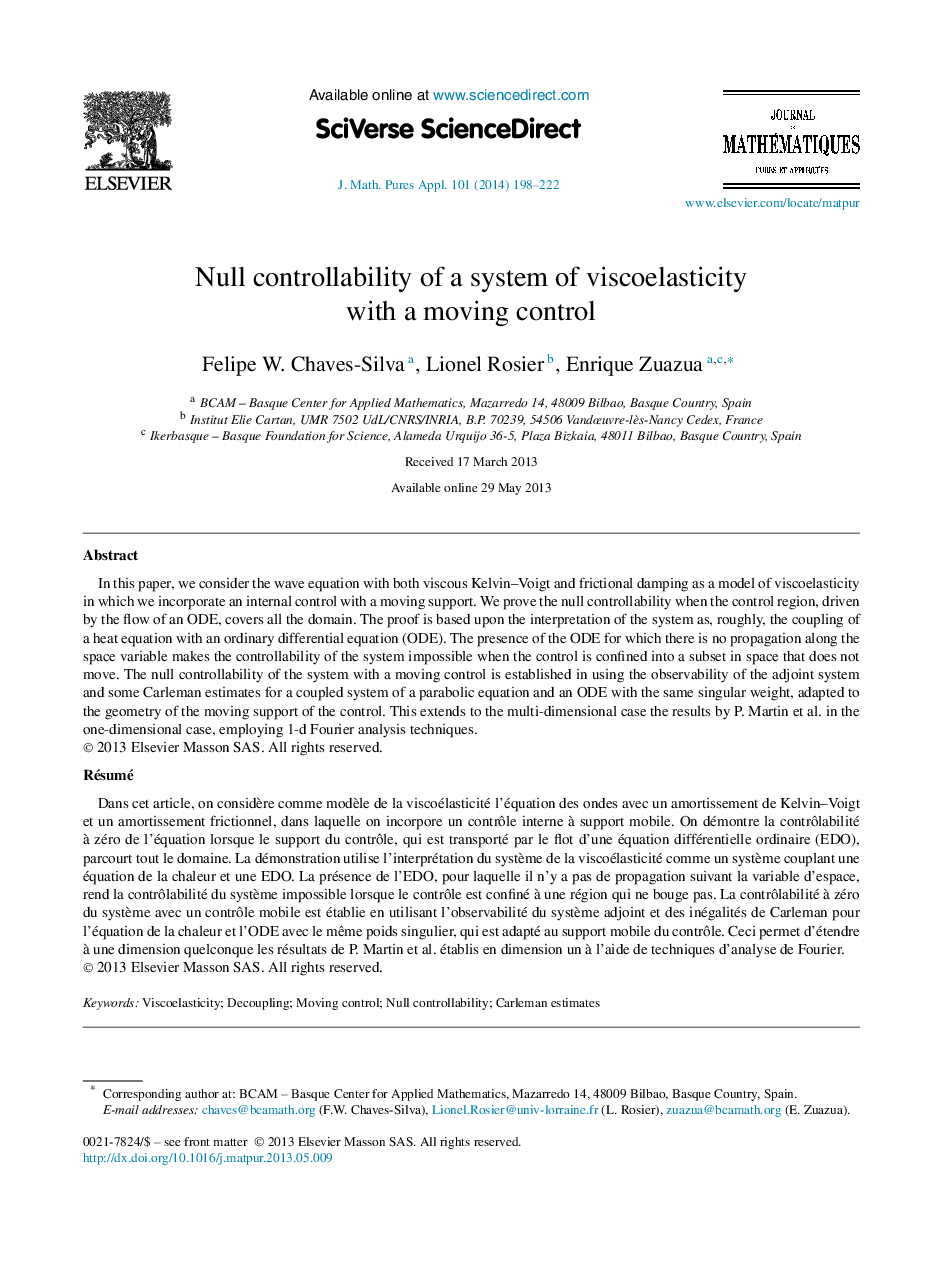| Article ID | Journal | Published Year | Pages | File Type |
|---|---|---|---|---|
| 4643971 | Journal de Mathématiques Pures et Appliquées | 2014 | 25 Pages |
In this paper, we consider the wave equation with both viscous Kelvin–Voigt and frictional damping as a model of viscoelasticity in which we incorporate an internal control with a moving support. We prove the null controllability when the control region, driven by the flow of an ODE, covers all the domain. The proof is based upon the interpretation of the system as, roughly, the coupling of a heat equation with an ordinary differential equation (ODE). The presence of the ODE for which there is no propagation along the space variable makes the controllability of the system impossible when the control is confined into a subset in space that does not move. The null controllability of the system with a moving control is established in using the observability of the adjoint system and some Carleman estimates for a coupled system of a parabolic equation and an ODE with the same singular weight, adapted to the geometry of the moving support of the control. This extends to the multi-dimensional case the results by P. Martin et al. in the one-dimensional case, employing 1-d Fourier analysis techniques.
RésuméDans cet article, on considère comme modèle de la viscoélasticité lʼéquation des ondes avec un amortissement de Kelvin–Voigt et un amortissement frictionnel, dans laquelle on incorpore un contrôle interne à support mobile. On démontre la contrôlabilité à zéro de lʼéquation lorsque le support du contrôle, qui est transporté par le flot dʼune équation différentielle ordinaire (EDO), parcourt tout le domaine. La démonstration utilise lʼinterprétation du système de la viscoélasticité comme un système couplant une équation de la chaleur et une EDO. La présence de lʼEDO, pour laquelle il nʼy a pas de propagation suivant la variable dʼespace, rend la contrôlabilité du système impossible lorsque le contrôle est confiné à une région qui ne bouge pas. La contrôlabilité à zéro du système avec un contrôle mobile est établie en utilisant lʼobservabilité du système adjoint et des inégalités de Carleman pour lʼéquation de la chaleur et lʼODE avec le même poids singulier, qui est adapté au support mobile du contrôle. Ceci permet dʼétendre à une dimension quelconque les résultats de P. Martin et al. établis en dimension un à lʼaide de techniques dʼanalyse de Fourier.
